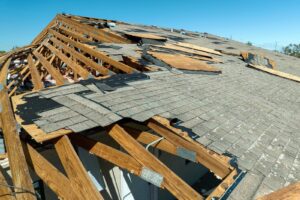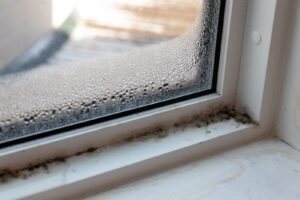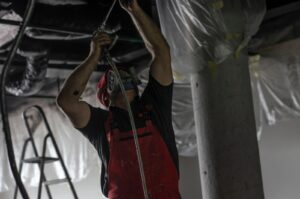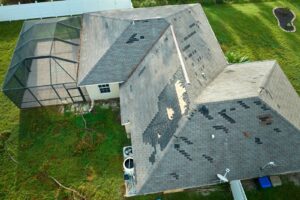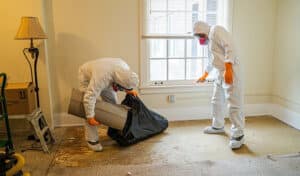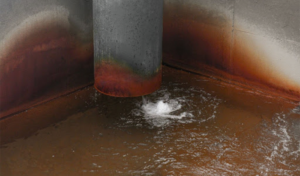A sewer backup can be a homeowner’s worst nightmare, leading to extensive damage, unpleasant odors, and potential health risks. It occurs when the wastewater and sewage flowing from your drains and toilets encounter an obstruction or overwhelm the capacity of the sewer system, causing them to reverse course and flood back into your property.
The repercussions can be far-reaching, affecting not only your home but also your well-being.
With this blog, we’ll help demystify sewer backups and provide you with practical insights to help you navigate this challenging situation. We’ll explore the common causes of sewer backups, signs you have a sewer backup, and other important information you should know.
By the end, you’ll be armed with valuable knowledge to effectively prevent, identify, and manage sewer backups.
What is Sewer Backup?
At its core, sewer backup refers to the unfortunate occurrence when wastewater and sewage from your property’s drains and toilets are unable to flow freely through the sewer system, resulting in a reverse flow of sewage back into your home or building. Sewage backups can cause significant damage and pose health risks if not addressed promptly.
When a sewer backup happens, it can lead to a range of problems and inconveniences. Foul odors permeate the affected areas, making them unpleasant and inhabitable. The reverse flow of sewage can damage flooring, walls, and personal belongings, requiring extensive cleanup and repairs.
Moreover, sewer backup can create an unhealthy environment, exposing you to harmful bacteria, pathogens, and other contaminants.
It is important to note that sewer backup is not limited to residential properties; commercial buildings and public facilities can also experience this issue. Regardless of the type of property, understanding sewer backup and its potential consequences is essential for taking proactive measures to prevent it and minimize the impact when it does occur.
What Causes Sewer Backups?
What causes sewer backups? Let’s explore the factors that contribute to this frustrating problem. By understanding the underlying causes, you can better grasp how to prevent sewer backups and mitigate their potential impact. Here are some common reasons:
Blockages in the sewer system:
- Tree roots: Over time, tree roots can infiltrate sewer pipes, causing blockages and restricting the flow of wastewater.
- Grease and oil buildup: Improper disposal of grease and oil down drains can lead to the accumulation of these substances within the sewer system, resulting in clogs.
- Foreign objects: Flushing items such as wipes or paper towels, which are not designed to break down in the water, can obstruct sewer pipes and cause backups.
Heavy rainfall and flooding:
- Excessive rainwater: During periods of heavy rainfall, the volume of water can exceed the capacity of the sewer system, leading to backups.
- Flooding: When an area experiences flooding, the excess water can disrupt the normal flow of sewage and cause backups in homes and buildings.
Aging sewer infrastructure:
- Deterioration of pipes: Over time, sewer pipes can deteriorate, crack, or collapse, impeding the proper flow of wastewater and increasing the risk of backups.
By recognizing these causes, you can take proactive measures to prevent sewer backups. Regular maintenance can help keep the sewer system clear.
Additionally, being mindful during heavy rainfall events and ensuring your property’s drainage system is functioning correctly can reduce the chances of backups. Understanding the causes empowers you to protect your property and maintain a healthy sewer system.
Signs of a Sewer Backup
Recognizing the signs of a sewer backup is crucial for prompt intervention and minimizing the potential damage to your property. As a homeowner or property owner, being aware of these indicators allows you to take immediate action and seek professional assistance when necessary. Here are some common signs that may indicate a sewer backup:
- Slow drains: If drains in your home, such as sinks, showers, and toilets, are slow to drain or are not draining at all, it could be a sign of a sewer backup.
- Gurgling sounds: Unusual gurgling or bubbling noises coming from your drains, especially when using other plumbing fixtures, may indicate that air is trapped due to a blockage in the sewer line.
- Foul odors: Persistent foul odors, reminiscent of sewage or rotting material, can permeate your home or specific areas and indicate a sewer backup issue.
- Multiple fixtures backing up: If you have more than one plumbing fixture in your home (such as toilets, sinks, or showers) experiencing simultaneous backups or unusual water level fluctuations, it could be a sign of a sewer backup.
- Water pooling in unexpected places: Sewage backups can cause water or sewage to pool in unusual locations, such as basement floors, lower-level drains, or drains near the floor.
If you notice any of these signs, it is crucial to take immediate action. Sewage backups can lead to significant property damage and pose health risks. Seeking professional assistance from a plumber or sewage remediation specialist is highly recommended to assess the situation, identify the underlying cause, and resolve the issue effectively.
Are Sewer Backups Dangerous?
Sewer backups are not only inconvenient and messy but can also pose significant dangers to your health and well-being. Understanding the potential hazards associated with sewer backups is important to take appropriate precautions and promptly address the situation.
One of the primary risks of sewer backups is exposure to harmful bacteria and pathogens present in sewage. Sewage contains a variety of microorganisms, including E. coli, Salmonella, and other disease-causing bacteria.
Direct contact with contaminated sewage or inhaling airborne particles can lead to gastrointestinal distress and skin rashes or infection (respiratory issues are far less common). These health hazards are particularly concerning for individuals with weakened immune systems, young children, and the elderly.
Given the potential health risks associated with sewer backups, it is crucial to prioritize your safety and the safety of others in your household or building. If you suspect a sewer backup, it is advisable to avoid direct contact with sewage and contaminated areas. Ensure proper hygiene practices, including washing hands thoroughly after any potential exposure.
Seek professional assistance to address the clean-up and disinfection process, as professionals have the knowledge, experience, and specialized equipment to handle the situation safely and effectively.
The Sewage Backup Clean-up process
When faced with a sewer backup, a professional sewage clean-up company can be your best ally in restoring your home or property to its pre-backup condition.
These specialized experts have the knowledge, experience, and equipment to handle the clean-up process efficiently and effectively. Let’s explore the steps typically involved in the sewer backup clean-up process:
- Initial assessment: The sewage clean-up company will conduct a thorough assessment of the affected areas to evaluate the extent of the damage and determine the appropriate course of action.
- Safety precautions: Ensuring safety is paramount during the sewage clean-up process. The company will take necessary precautions to protect its team and occupants from potential hazards, such as wearing personal protective equipment and setting up containment barriers to prevent the spread of contaminants.
- Removal of standing water: If there is standing water due to the backup, the sewage backup clean-up team will use pumps or other water extraction equipment to remove it from your property.
- Contaminated material removal: All items and materials that have been contaminated or cannot be salvaged will be safely removed from the affected areas. This includes damaged carpets, flooring, drywall, and furniture.
- Thorough cleaning and sanitization: The clean-up professionals will clean and disinfect all surfaces, ensuring the removal of bacteria, pathogens, and lingering odors. Specialized cleaning agents and equipment will be used to achieve a thorough and effective cleaning process.
Once everything is cleaned and sanitized, the area will be dried to help prevent mold growth, and any repairs needed will be made.
Trust Restoremasters for Expert Sewage Backup Clean-up
Sewer backups can be overwhelming and cause significant damage to your property, but you don’t have to face the aftermath alone; Restoremasters is here to help you through every step of the sewer backup clean-up and restoration process. Our experienced team has the knowledge, expertise, and equipment to handle even the most challenging clean-up situations.
We understand the urgency and importance of swift action and are committed to restoring your property to its original condition before the backup occurred.
Don’t let a sewer backup disrupt your life any longer. Our team is available 24/7 to respond to emergencies, providing immediate assistance when you need it most. Call us now at 801-446-6727 and let Restoremasters restore your property so that you can regain comfort and normalcy in your home or business.


